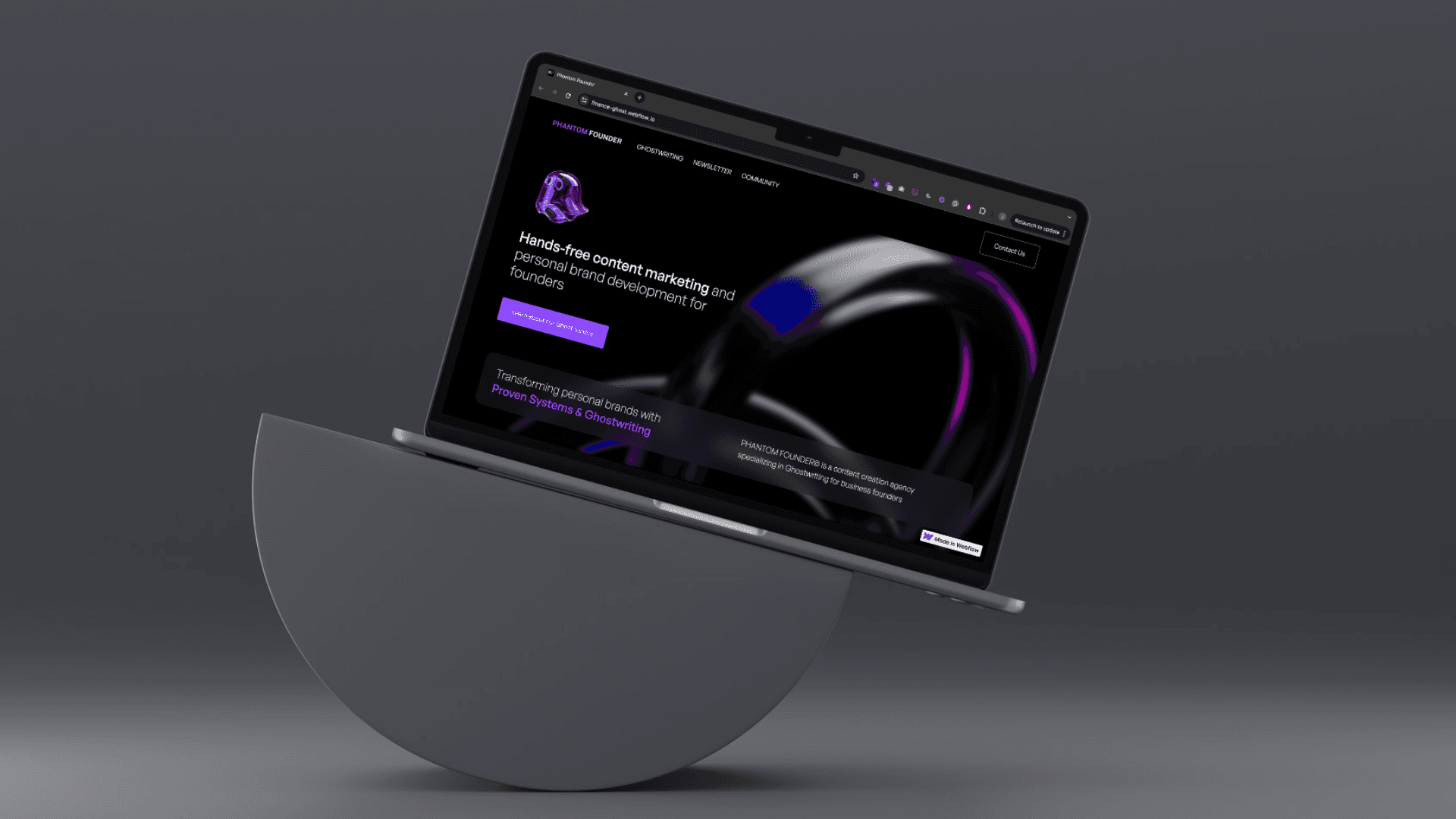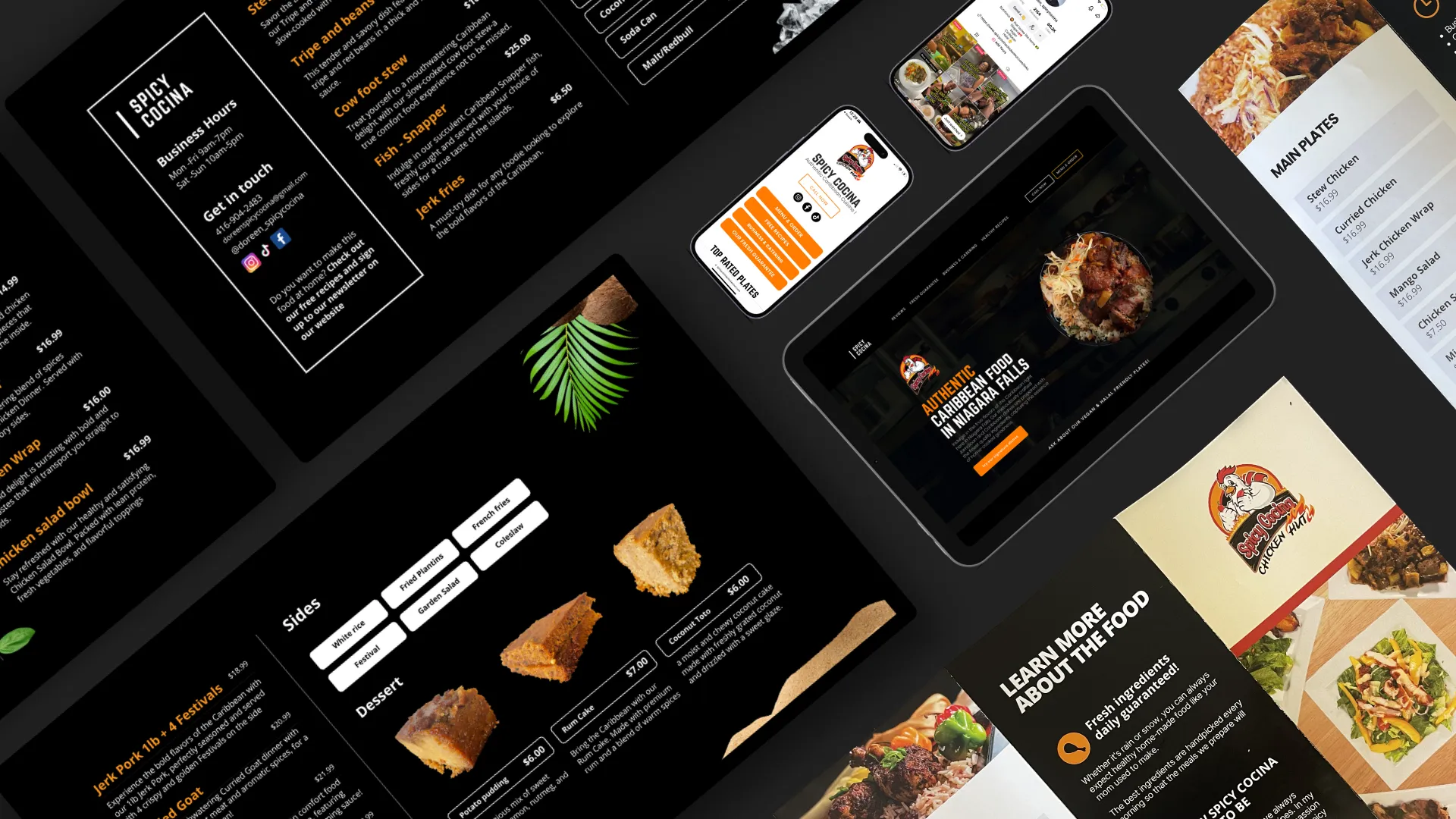Mastering the Art of Branding & Website Design
Websites
×
August 18, 2024
Your website is often the first official interaction potential customers have with your brand.
A well-designed website isn't just about aesthetics—it's about creating a relevant brand identity that resonates with your audience and leaves a lasting impression.
Branding in website design is more than just logos and colours; it's about crafting an experience that reflects the essence of your business.
This guide explores the critical role branding plays in web design, breaks down the essential elements, and provides actionable insights to help you create a website that looks great and strengthens your brand.
Let's dive in!
Understanding the Role of Branding in Website Design
Branding in web design is the process of aligning your website’s visuals, content, and overall experience with your brand’s identity.
This means ensuring that everything from your logo to your website’s tone of voice is consistent with the values and message your brand aims to convey.
Your website should offer a consistent experience.
The difference between a good website and a great website is that the former was built and branded for a specific audience, while the latter will take a general approach.

1. Designing a Unique Logo
Your logo is the visual cornerstone of your brand. It’s not just a decorative element but a symbol that represents your business's identity.
A unique logo helps in creating brand recall and should be present on all pages of your website, as well as across your social media channels and marketing materials.
A well-designed logo that aligns with your brand’s voice and content will make your website instantly recognizable.
Example: Consider how Apple's simple yet iconic logo seamlessly integrates across its website, store, and products, reinforcing its brand identity at every touchpoint.

2. Choosing a Consistent Color Scheme
Color plays a powerful role in branding, influencing how your audience perceives your brand.
A consistent color scheme not only helps in creating a cohesive look but also evokes emotions and sets the tone for your brand.
When selecting your brand colors, ensure they complement your logo and work well together across various elements of your site.
Example: Facebook’s use of a consistent blue color palette across all its platforms helps in reinforcing its brand identity and making it easily recognizable.

3. Selecting Cohesive Imagery
Images are more than just decorative elements; they convey your brand’s message and values.
The imagery used on your website should follow a consistent theme that aligns with your brand’s identity.
Whether you choose professional photographs, illustrations, or even animated graphics, ensure that your images are consistent and reflective of your brand’s personality.
This not only enhances the visual appeal of your website but also strengthens your brand’s narrative.
Example: Websites like Nike use high-quality, consistent imagery that reflects their brand’s emphasis on athleticism and empowerment.
4. Crafting a Distinctive Voice
Your brand’s voice is how you communicate with your audience.
Whether formal, casual, humorous, or authoritative, your website’s tone should be consistent with your brand’s identity and resonate with your target audience. Before creating content, it’s crucial to define your brand’s voice.
This will guide the language and tone used throughout your website, ensuring a unified message that speaks directly to your audience.
Example: KlientBoost’s website is a perfect example of how a fun, engaging tone can align with vibrant imagery to create a compelling brand narrative.

What does your user feel?
What your customers feel after using your website is just as important as what they see, which is why you should consider the purpose of your website.
For example, if you want to build your brand from scratch a quick way would be to offer free courses or webinars that address your audience's most pressing challenges.
This positions your brand as both generous and knowledgeable, generating trust from the start and a sense of transparency.
For example: Amazon has created a market place experience that leaves you feeling like you saved time and money.

6. Implementing a Brand Style Guide
A brand style guide is a vital tool that ensures consistency across all branding elements.
It outlines the correct usage of your logo, color schemes, typography, and tone of voice, serving as a reference for anyone working on your brand.
Creating a brand style guide ensures that every piece of content, whether on your website or social media, aligns with your brand’s identity.
This consistency is key to building a strong, recognizable brand.
Example: A well-crafted style guide can prevent inconsistencies and ensure that your brand is always presented in the best light.
Best Practices for Integrating Branding into Website Design

Consistency Across All Platforms
Your brand’s identity should be consistent across all digital and physical touchpoints.
Whether it’s your website, social media channels, or email newsletters, maintaining a cohesive look and feel across platforms reinforces your brand’s identity and builds trust with your audience.
Example: Planet Fitness is a brand that nails consistency across all platforms, from their website to social media, ensuring that their brand is instantly recognizable wherever it appears.

User Experience and Branding
A well-branded website is not just visually appealing; it’s also user-friendly.
Your initial design should be simple, making it easy for visitors to navigate and find what they’re looking for.
A seamless user experience that aligns with your brand’s identity enhances the overall perception of your brand.
Example: PayPal’s website is a prime example of how a simple, streamlined design can reinforce brand reliability and user trust.
Common Pitfalls and How to Avoid Them
Inconsistent Branding
Inconsistencies in branding can confuse your audience and weaken your brand’s identity.
Ensure that all branding elements—from colors and logos to content tone—are used consistently across your website and other platforms.
Example: A brand that fails to maintain consistency might see a decrease in customer trust and loyalty, as mixed messages can create confusion.
Overcomplicating the Design
While creativity is important, overcomplicating your website design can detract from the user experience.
Simple, clean designs often work best, allowing your branding elements to shine without overwhelming the user.
Example: Google’s minimalist design is a great example of how simplicity can be both functional and powerful in reinforcing brand identity.
Branding is a critical component of effective website design.
By focusing on creating a consistent, cohesive brand identity across your website and all digital platforms, you can build a strong, memorable brand that resonates with your audience.
Whether you’re designing a new website or rebranding an existing one, remember that every element—from your logo to your content’s tone—should work together to create a unified brand experience.
Take the time to develop a comprehensive brand strategy, and your website will not only attract visitors but also convert them into loyal customers.
Ready to take your branding to the next level?
Start by auditing your current website and implementing the strategies discussed in this guide.
Need help? Contact us today for a consultation, and let’s build a brand that stands out in the digital world.












